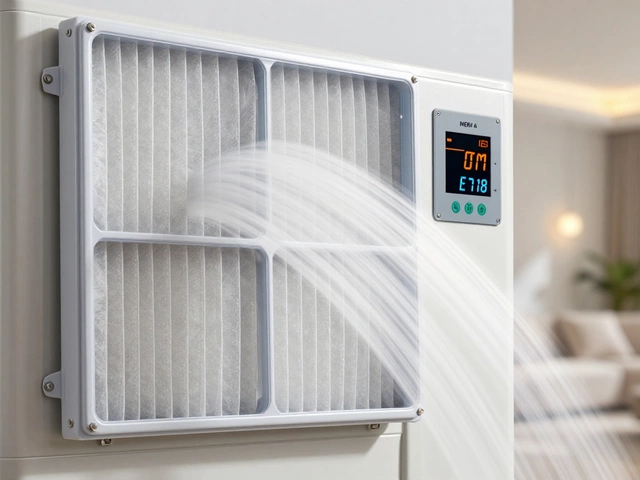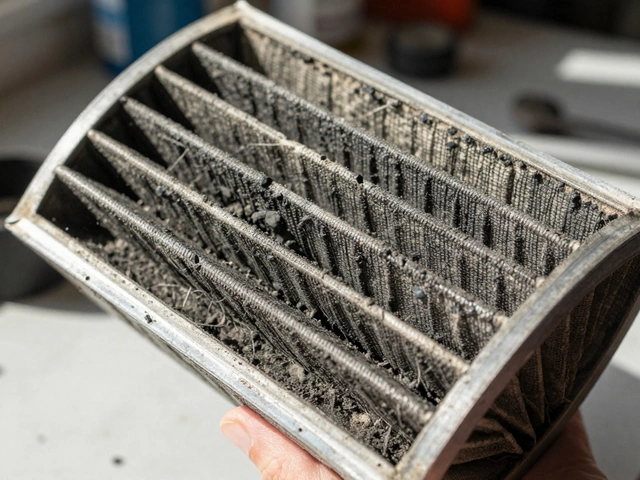
So, you've got a car, and you've probably heard something about keeping an eye on the oil level, right? But what does that even mean for your oil gauge? Trust me, it's not as complicated as it sounds. Checking your oil gauge and knowing the right level to maintain can save you from a whole lot of engine trouble.
First things first, let's get to know the oil gauge. Usually, it's on the dashboard, staring right at you. It tells you how much oil is in the engine, which is kind of like giving your engine a health check. A healthy gauge means a happy engine, and a happy engine means smoother rides without those dreaded breakdowns.
So why should you bother? Well, low oil can spell disaster for your engine, like those annoying engine noises or even a full breakdown. You wouldn't want to be stranded on the side of the road just because of this tiny oversight. Keeping an eye on the oil gauge helps you avoid these annoying and costly problems.
- Understanding the Oil Gauge
- Why Oil Level Matters
- Tips for Checking Oils
- Dealing with Low Oil Levels
Understanding the Oil Gauge
The oil gauge on your dashboard might look like just another bunch of numbers and lines, but it’s actually one of your car's key tools for keeping things running smoothly. Your oil gauge does two things: it tells you how much oil you have and, in some cars, it can show the oil pressure too. This is crucial because the right amount and pressure keeps your engine lubricated and prevents it from overheating.
You might be wondering, how often should you check this gauge? A good rule of thumb is to check your engine oil level about once a month and definitely before any long road trips. All you really need is a few minutes and a rag—no fancy equipment required.
When you're looking at the gauge, here's what you should see: There are usually markers indicating minimum and maximum oil levels—these are your guidelines. Ideally, the oil should be near the top of the indicator, but not over it. If it's just below normal, you're likely fine for now, but keep an eye on it.
If your gauge shows low oil or flickers between normal and low, it's time to add some oil or get it checked out. Running your engine on low oil can lead to engine wear and, trust me, those repairs aren't fun for your pocket.
- Check oil level when the engine is cool for the most accurate reading.
- If your gauge doesn’t have numbers, look for the 'L' for low and 'H' for high on the oil dipstick, if your car has one.
- Some modern cars have digital oil gauges that might display messages like 'Oil Level OK' or 'Add Oil.'
Understanding your car's oil gauge can prevent issues before they start, so you’re always one step ahead. Keeping it in the right range means fewer surprises and smoother driving experiences.
Why Oil Level Matters
Your car's oil gauge level isn't just there for decoration—it's vital for keeping your engine running smoothly. Think of oil as your engine's lifeblood. It lubricates, cools, and cleans the engine parts while helping in energy transfer.
When the oil level is too low, parts of your engine aren't getting enough lubrication, leading to friction, overheating, and even wear and tear on the metal components. This could mean expensive repairs down the line, or worse, a complete engine failure.
Here's a neat stat for you: a study revealed that nearly 40% of engine failures are due to lubrication-related issues. Yikes! Keeping an eye on your engine oil isn't something to ignore.
Besides, maintaining just the right oil level also means keeping your engine's heat in check. Oil dissipates heat, so without enough of it, your engine might overheat, leading to power loss or, in extreme cases, engine seizures.
But wait, there's more. When oil levels are low, contaminants like dirt and debris are more likely to build up, which can affect engine performance and decrease fuel efficiency. No one wants to end up with a car that guzzles gas more than necessary.
So next time you glance at that oil gauge, remember that the right level is key to keeping your engine healthy, saving you from breakdown worries and potentially costly repair bills. It's a small step with big benefits for your car.

Tips for Checking Oils
Checking your oil gauge level doesn't require a degree in mechanics. It's all about knowing the right steps and paying attention to details. Let’s break it down so even Whiskers would understand (if she cared, but she’s a cat, so probably not).
First off, make sure your car is parked on a flat surface. This might seem obvious, but an incline can mess everything up, giving you a false reading. Trust me, getting this minor detail wrong can lead to some major headaches.
- Wait a bit: Turn off your engine and let it cool for a few minutes. Hot oil gives a poor impression of the current engine oil level.
- Find the dipstick: This little genius usually has a bright handle. Pull it out, wipe it clean with a rag or paper towel, and then dip it back fully.
- Check the level: Pull out the dipstick again and look at where the oil reaches. There should be markings like 'Min' and 'Max.' You’re looking to keep it somewhere in the middle of those.
- Top up if needed: If you’re on the lower side, don't freak out. Just pour in some oil specific to your car model and check again. Just remember, more isn't always better; stay within the safe zone.
Getting into the habit of checking your oil every month or so can spare you from nasty surprises. Besides, catching minor issues early is a whole lot cheaper than needing a new engine, right?
For those who love stats, here's a quick view of oil levels versus engine health:
| Oil Level | Engine Health Impact |
|---|---|
| Full | Optimal performance |
| Half | Safe, but keep an eye |
| Low | Increased wear, shoddy performance |
| Empty | Possible engine failure! |
So, keep that oil gauge level in check and your car—and wallet—will thank you.
Dealing with Low Oil Levels
Running low on engine oil? That’s definitely not something you want to ignore. If your oil gauge is showing a low level, you've got to take some quick action to prevent any engine damage. Don't panic—here's what you can do to get things back to normal.
First, before you do anything else, pull over and turn off your engine. The last thing you want is to cause more wear and tear while your engine is running without enough lubrication. Once your car is safely parked and the engine is off, let it cool for a bit, then check the oil level with the dipstick. Make sure your car is on level ground for an accurate reading.
- Check the dipstick: Pull out the dipstick, wipe it clean with a cloth, and push it back in before pulling it out again. Look carefully at the markings to see how much oil is in there. If it's below the minimum mark, you need to add oil.
- Add the right oil: Make sure you've got the oil recommended for your car. Your owner’s manual will have this info. Add a little at a time and keep checking the level. You don't want to overfill it!
- Check for leaks: If you’re constantly adding oil, there could be a leak. Look under your car for oil spots or get a mechanic to check it out.
- Plan for a refill: Once you've topped up your oil, keep an eye on the levels for a few days. If it drops quickly again, it's time to visit a mechanic.
Sometimes it's a good idea to track your car's maintenance, and luckily, modern cars often have sensors that alert you to low oil levels. Neat, right? But don't rely only on sensors. Old-school checks can save you a lot of headaches.
Here's a small but interesting fact: According to experts, around 70% of engine wear happens due to improper oil levels. Car maintenance might sound like a chore, but it's crucial for your vehicle's longevity and performance. So keep that oil gauge in check to avoid unexpected costs and keep your car in great shape!





